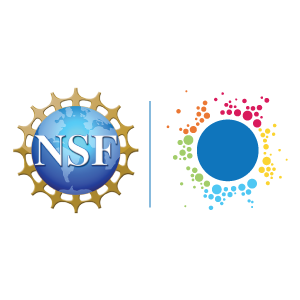By Carly Chillmon, NSF INCLUDES Coordination Hub (Digital Promise)
How can we structure, coordinate, and orchestrate the work of broadening participation in STEM? One way is through building a collaborative infrastructure to help multiple organizational partners more effectively organize their research and development efforts. To promote effective collaborative processes, the NSF INCLUDES Coordination Hub is making information and insights on promising practices and methods from National Network members more rapidly and readily available to other Network members and others committed to broadening participation in STEM.
Introducing a New Publication Opportunity

To share the progress that NSF INCLUDES teams are making, we have launched a new form of publication: Rapid Community Reports – Process Reflections. We encourage Network members to share practices related to one or more of the five elements of collaborative infrastructure: (1) Shared Vision, (2) Partnerships, (3) Goals and Metrics, (4) Leadership and Communication, (5) Expansion, Sustainability and Scale. Published Process Reflections will also provide a model for reflecting on inclusive processes within the INCLUDES community and related communities.
A Process Reflection should introduce, inquire into, and discuss what is being learned about best practices for organizing and conducting STEM-focused equity and inclusion projects. Reflections are intentional and deliberate and offer a range of perspectives; they are peer-reviewed by Network members to broaden the impact in our community and beyond.
Publish Early Insights About Inclusive Processes
Knowledge gained from experience is often shared too late to help others. Innovations in collaborative infrastructure may occur early in NSF INCLUDES projects, and there are many lessons to be learned from the process itself, including missteps, challenges, successes, and everything in between. A Process Reflection provides an opportunity to disseminate your progress while you are still actively working toward the project goals.
The strength of the Reflection goes beyond the individual or team level. A Process Reflection includes diverse viewpoints in reflecting on a team’s process and its improvement. Meeting the bar for evidence can be simple—a team can send a survey to everyone participating in their process with three questions: what’s working? what’s not? what should we improve?
Another way to collect evidence of including diverse viewpoints in the reflections would be to involve external experts in a review, such as what may occur at an advisory meeting. It is also possible that a review occurs at a retreat, a conference, or other events.
By sharing one or a few novel or significant process elements, your team can highlight what’s working and what can be improved as we work together so projects can more effectively and efficiently address challenges and systemic barriers in STEM education and careers.
The First Example of a Process Reflection

Our first Rapid Community Report – Process Reflection comes from the NSF INCLUDES Aspire Alliance. Networking Networks: Leveraging STEM Professional Society “Boundary Spanners” to Advance Diversity, Equity, and Inclusion shares lessons learned through working towards inclusive culture-change within STEM professional societies. It introduces the concept of a “boundary spanner”— an individual who holds multi-organizational memberships and fills structural holes between networks—to better understand the impact of networking to foster collaborative engagement.
Gretalyn M. Leibnitz, Aspire Alliance National Change Professional Society Engagement Lead, saw this publishing opportunity as a way to strengthen Aspire’s work through sharing lessons learned and underscoring the importance of working with diverse teams.
Q: Why do you think it’s important for NSF INCLUDES National Network members to share lessons learned to strengthen their work?
A (Leibnitz): It is very clear from two decades of ADVANCE work and models like the ADVANCE Implementation Mentors (AIM) Network, and American Physical Society Inclusion, Diversity, and Equity Alliance (APS-IDEA), that fostering vehicles for people engaged in culture change work to engage with one another provides support, accountability, and efficient dissemination of emerging and promising practices, as well as strategies that did not achieve the intended objective. For these same reasons, it is important for INCLUDES Network members to share lessons learned.
Q: If you could give one piece of advice to NSF INCLUDES National Network members on engaging individuals in collaborative DEI work, what would it be?
A: My advice would be to not do this work alone and in silos. We know that excellence is fostered through diverse teams. Pulling together diverse teams to address target areas of concern, and/or to share emerging general practices about transformation processes ensures that we are efficient and effective with our time, energy, and resources. In this day and age, there is no need to re-invent the wheel.
Q: What is one insight you learned through the Process Reflection pilot process that has shaped how you plan to move forward with your work?
A: One insight I gained through the Process Reflection pilot was the value of getting a clear idea of how we got to where we are now, and, in conversation with my core team, developing a clear and deep sense of the innovation we were fostering.
***
If you’re interested in writing a Process Reflection with your team, please reach out to nsfincludeshub@sri.com. You can access the full Process Reflection here. Join the INCLUDES National Network at www.includesnetwork.org to connect with members and to access other resources that support efforts to expand participation in STEM learning and careers. If you have stories to tell about using strategies for building collaborative infrastructure, or if there are any particular strategies, you recommend, let us know in the comments below.

